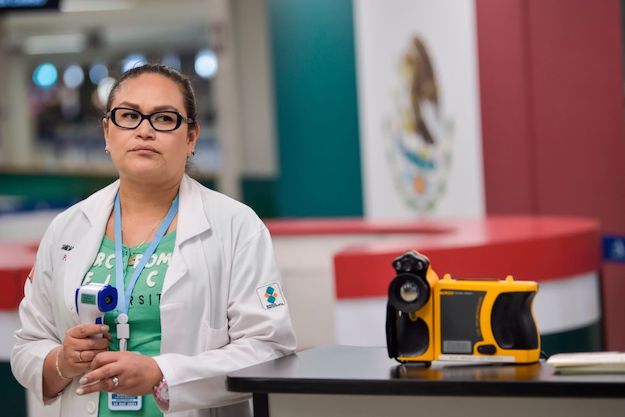For Latin Americans accustomed to red tape, it can seem like a godsend – instead of waiting in line, a swipe on a smart phone; instead of piles of paperwork, a text message or two. Over the last several years, financial technology has changed the way that consumers from Mexico to Brazil save and spend their money. Now, as startups in the region multiply and traditional banks adjust, what started as a trend is looking more like a boom.
According to Andrés Fontao, co-founder of the Mexico-based startup accelerator Finnovista, there are now more than 570 financial technology startups operating across Latin America. Increasing internet and smartphone penetration in the region has enabled scores of entrepreneurs to offer technology-based financial services – from mobile savings accounts to app-based small business loans – at lower cost and more conveniently than traditional banks.
“Using big data and digital channels allows startups to spend less money in distribution, risk assessment, and infrastructure,” Gabriela Andrade, Financial Markets Senior Specialist at the Inter-American Development Bank (IADB), told AQ. The result is that consumers in Latin America are now increasingly able to access the financial tools they need to shop, grow their business or deal with emergencies.
Afluenta, an Argentina-based peer-to-peer lending (or “crowdlending”) service founded in 2012 by Alejandro Cosentino, is just one example. Afluenta is a website for users to request loans or make small investments directly with other users, without going through a traditional bank. The platform, currently available in Argentina, Chile and Peru, has been used to process more than 700,000 transactions between 6,000 borrowers and 3,500 investors. And those numbers are growing. The company’s first four years of operation saw $17 million in transactions – now, it processes $1 million every month, according to Cosentino.
Afluenta is just one of a number of crowdlending platforms that have emerged across the region in recent years, and financial technology startups have also stepped in to compete with traditional banks in everything from payment and remittance services to enterprise financial management.
Indeed, Latin America is particularly fertile ground for the growth of these startups, partly because the traditional financial services industry in the region is heavily concentrated in just a few big banks. This often leads to high-cost, inefficient services that in the end only reach about half of the region’s population, said Cosentino.
But the rise of financial startups and new technologies to fill that gap is not without risks. Since many financial technology (or “fintech”) transactions take place in the anonymity of the internet, services offering everything from crowdlending to payment processing may lend themselves to illicit uses, according to many experts.
“There is no doubt that fintech has to be carefully regulated, in a professional and responsible way. The regulator will look to protect its citizens in their acquisition of services,” said Cosentino.
Still, advances in technology, the consolidation of the sector and positive reactions from some incumbents raise the prospects of further growth. While some local banks have been more cautious regarding the rise of financial technology, international banks like Citi and Santander are actively looking for ways to collaborate and incorporate new technologies, according to Fontao. For instance, Spanish bank BBVA hosts its own annual startup competition in the region, and has made a “mobile wallet” available in Mexico, Chile and Colombia. Andrade said that the number of fintech companies that the IDB is tracking in partnership with Finnovista for a 2017 report, to be published early this year, is “much much much higher than people imagine.” The aim of the report, she said, is to make it clear to the relevant parties that the fintech trend arrived to Latin America to stay.
Investors are on board, too. According to the Latin American Venture Capital Association, startups in the fintech sector received more investment in 2015 ($142,955,200) than any other startup sector in the region. In December 2016, Canadian Scotiabank and venture capital firm QED investors announced a partnership to promote and inject capital into Latin America’s fintech scene.
Many fintech entrepreneurs are hoping that the region’s governments will take an equally enthusiastic view of new technologies. As technology-based solutions are used to improve the region’s constricted financial sector, many see a clear opportunity for public-private collaboration.
Diego Serebrisky, a Mexican venture capitalist, told AQ that many financial technologies can be used to help boost financial inclusion in underserved communities. He cited Clip, a Mexico-based startup offering retailers an efficient and easy-to-use “point of sale” application to help them process credit and debit card payments. Small businesses that can’t afford traditional point of sale services can use Clip or similar products to have systems up and running in as little as 15 minutes at minimal cost.
Nubank, a Brazil-based digital banking company, is another example technology that can help expand access to banking and financial services. Nubank cofounder and CEO David Velez and his team created a credit card offering digital-only services, no annual fee, and half the interest rate that most Brazilian commercial banks charge. Velez told AQ that many of those who use the card had previously been excluded from accessing personal credit. “They can buy a 40 dollar Android, download the app, and get the card in 24 hours,” Velez said. Since Nubank’s launch in 2013, the company has processed 75 million purchases and 7 million people have applied for the card.
Still, the fintech ecosystem in Latin America has room to develop, Andrade said, partly due to the fact that many governments have been slow to respond to changing realities.
In Asia, where the number of fintech services is higher and the ecosystem is more mature than in Latin America, numerous governments have already established institutions to deal specifically with the new sector (Singapore, for example, has a fintech office). In Latin America, signs of government attention are only now becoming apparent; in Chile, the government recently asked the IADB for assistance to regulate “alternative finances,” according to Andrade, while in Mexico a fintech law, aimed primarily at preventing money laundering and hacking, is in the works.
“The role of the public sector is vital because it demonstrates that the issue is being considered seriously,” Andrade said. “The whole world is still in the process of learning and experimenting with fintech regulation … I think that (in Latin America) there is this new perception of ‘what do we need to do now?’”
—
Krygier is an editorial intern for AQ








